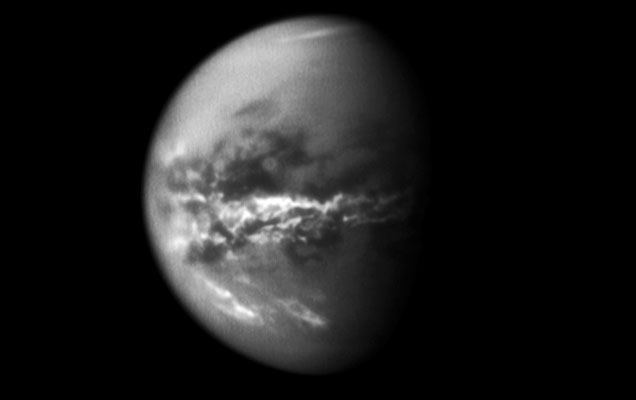
On descending toward the surface of Saturn’s haze-shrouded moon Titan in early 2005, the Huygens lander spied all manner of channels and canyons that had to have been carved into the ice of the deeply frigid satellite by rushing liquefied methane. But there were neither methane rains nor even methane clouds seen in Titan’s “tropics” where Huygens landed. Patience has paid off, however. Now that southern hemisphere winter on Titan is giving way to spring (a Titan season is more than 7 Earth years long), equatorial rains have arrived , according to a report published online today in Science. By monitoring Titan in haze-penetrating infrared, researchers spied equatorial clouds (white in this picture) last September and October using an instrument on board NASA’s Cassini spacecraft that is still orbiting Saturn. And after the September clouds had passed, they found that an equatorial region had darkened. That’s just what methane rain would do if it formed puddles or at least wetted the surface. The spring rains are reassuring atmospheric scientists, who had called for such seasonal changes, and confirming that equatorial erosion continues on Titan.
